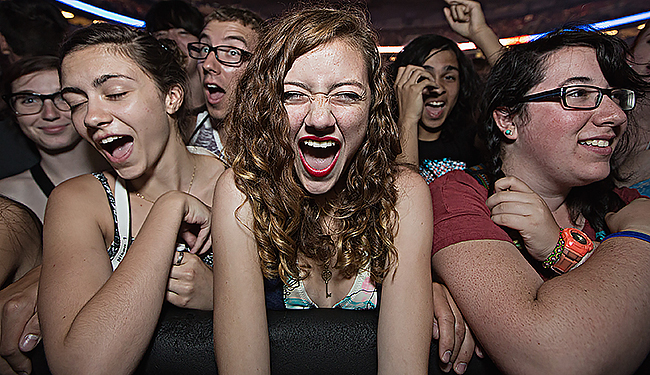
Lots of ink gets spilled over music festivals every year.
Throughout the period from spring to early fall known as “festival season,” readers and writers alike are kept busy with lineup announcements, biggest moments round-ups and thinkpieces trying to suss out what the most “problematic” thing going was.
What typically gets lost in the constant churn of fest news (and rarely garners a thought from sunburnt fest-goers) is just how hard it is to pull off an A-list festival and the logistics of getting several hundred touring acts in the same space at the same time.
With that in mind, Uproxx sat down with Chad Queirolo – the man in charge of booking musical acts for Seattle’s 45th Bumbershoot Festival – to figure out how it all comes together. Queirolo is vice president of Talent at AEG Live Pacific Northwest; the parent company oversees Coachella and New Orleans Jazz Fest, among other signature music festivals.
How did you come to your position booking for Bumbershoot?
When we came on to the fest, it had gone through this very interesting progression. For the last few years, it hadn’t made money and was starting to fall apart financially. As a Seattle native who had grown up with the festival, I couldn’t stomach the thing going away. So we started negotiations with the city of Seattle, put in a lot of work in November and December in the hopes that we could hopefully spring the festival back to life and bring in a little more talent.
What are you looking for in an act? How do you go about looking for them?
Most of these festivals start start booking a good year out. I started in January, already a good four to five months behind on this. We started looking for who might be touring, who might be available, while trying to stay true to the history of the festival [as a product of Seattle].
I wanted to pull in some of the older, classic acts but due to things like health, we ended up booking it younger. We got Ellie Goulding at the end of a big year for her, with her arena run and eventually everything started falling into place. We got Cake, Social Distortion and Neko Case. Those all felt good. I wanted to get some of the new country in there. Truthfully, I wanted Sturgill [Simpson] and he couldn’t do it. But Chris Stapleton rules, and Kacey Musgraves rules.
The Weeknd came on board and that was very exciting. Then we got Hozier… We don’t have the carte blanche of a bigger festival like Lollapalooza or Coachella. We can’t say “Oh, I wan’t that person, I want this person.” So to go out and get the caliber of artists we did, it worked out pretty well.
Is there a particular balance you are trying to strike between regional or national acts? Was it a conscious decision to book local acts [like The Melvins and Dead Moon]?
Yes. I’m happy with the balance regionally. The balance as far as gender, as well. That was a conscious decision to have more women, which is still a very big problem with festivals. [The articles] were coming out showing what percentages of festivals were male and female. And the percentages of females were so low. Thank god we’re not on those lists. Our lineup is 35 percent female. Could it be better? Could it be 50 percent? Maybe. But we feel good about it.
Of course, we have to pepper it with local acts. It’s been a local festival for a long time.
Did you feel any pressure being a local taking over this Seattle institution, especially since this is your first time booking a festival?
Oh, yeah. Especially about the cost of a ticket. You know for a time, the festival was almost free. And people want to throw the ticket price in your face, but artists cost a lot of money.
I’d see it a lot on my Facebook feed. People who I’m friends with who are around the same age as me, 45-46. They have families and they say ‘Well, this is a load of sh*t. I can’t take my family for a day at $100 a ticket.’ They have no idea that one of their friends is the one behind the lineup… but if you go see The Weeknd at an arena, it’s going to cost you $75. With us you might get to see 25 other acts, so I think it’s worth it.
We’re working on a festival 45 years after it comes about, it’s the same age as me. And we’re trying to make sure that it continues to be popular and successful still. We did a lot of work to make sure that this will still be here for the community.
The 45th iteration of Bumbershoot runs from Sept. 5-7 at Seattle Center.






